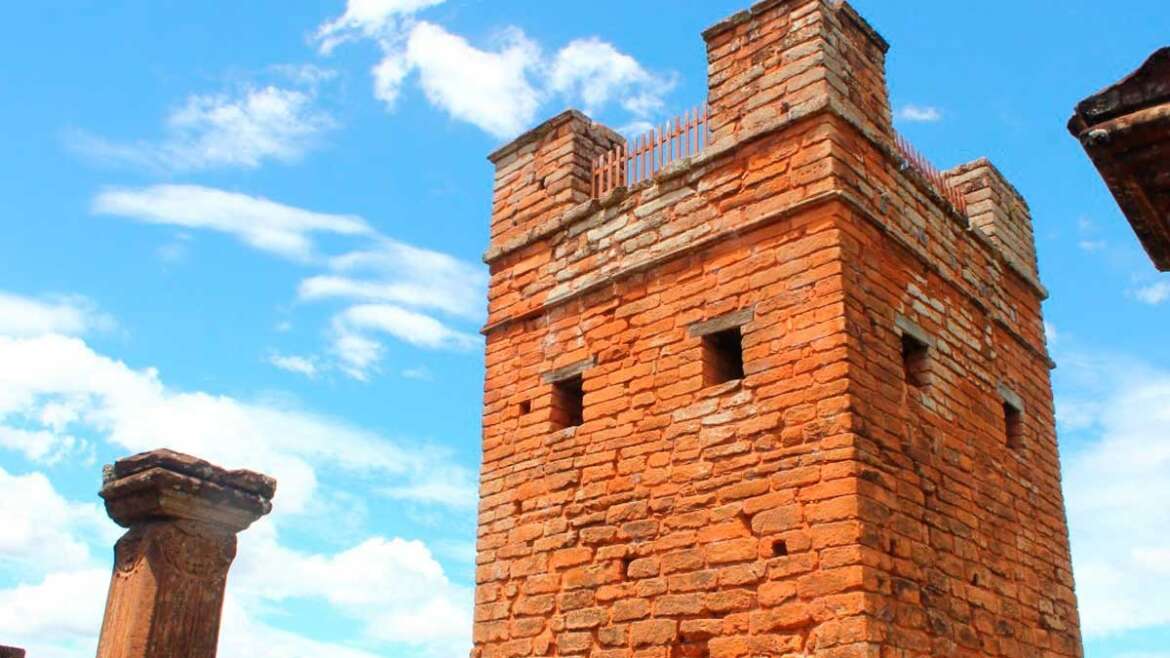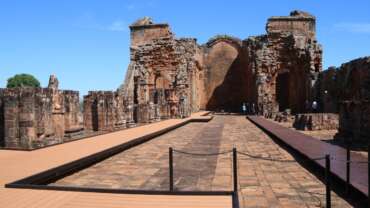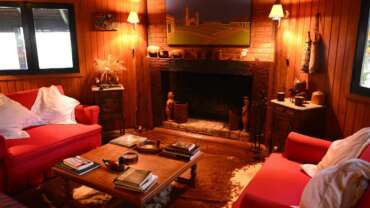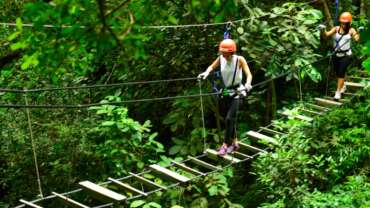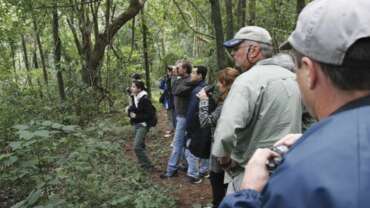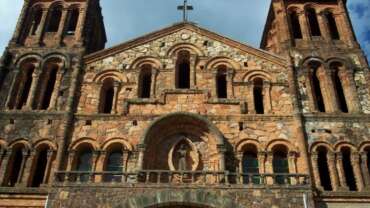Cultural Tourism in Paraguay
Paraguay, the land of ñandutí and the coconut flower, of the orange blossom and yerba mate, finds its origin in the mixture of two existing cultures and traditions: the European, and the Southern Guaraní. A characteristic of this cultural mix is the bilingualism that still lives on today, given that 80% of Paraguayans speak both Spanish and Guaraní, and many use Jopara into their speech, which is a combination of both languages.
In music, literature, and everyday situations, Guaraní is the ever-present, fundamental element of Paraguayan culture. In addition to literary manifestations, Guaraní culture has also marked other artistic expressions, such as theater, music, art, and sculpting, all crafted by great national and international artists, which can be experienced by tourists in museums, auditoriums and art galleries.
Many Paraguayan traditions date back to the presence of Jesuit and Franciscan missionaries in the seventeenth and eighteenth centuries, who left splendid architectural constructions and sculptures that are part of the Spanish-Guaraní baroque.
The Creole formation of the Paraguayan people, where both indigenous and Spanish influences meet, makes Paraguay a land of peculiar customs, such as the love for yerba mate and the thorough knowledge of natural medicine.
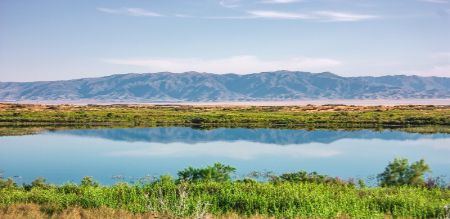
Franciscan Road
The Franciscan Road explores towns that were founded in the second half of the sixteenth century by the Order of Saint Francis in Paraguay, and that, to this day, continue to preserve the customs, traditions, and crafts of these missionaries as their greatest treasures.
Around thirty towns distributed by the ample geography of the eastern Region of Paraguay are part of the Franciscan Road, where the presence and actions of this religious order has left a significant imprint. Hence, the name PYPORÉ, which means footprint or trace, chosen for the project dedicated to cultural and tourism planning in these regions.
In Paraguay, the Franciscans were pioneers, for they were the first to create the missionary model and to use Guaraní as the main language in their missionary work, to attract the indigenous people through kindness, to introduce European techniques into their production systems, to organize the population and to stimulate the arts and popular culture that still endure today.
This tour, very popular and widely visited by religious tourism enthusiasts, highlights the architectonic value, especially the altarpieces of the churches, the beauty of their crafts, the carvings of Saints in wood and the magnificent pieces of baroque-Guaraní art. This is added to the simplicity of their customs, in the slow passing of a time that seems to have stopped in eternal peace. For all these reasons, visiting these towns is an unforgettable experience.
Museums of Asunción
Paraguay is a bilingual country, the only one in the world where an indigenous language, Guaraní, continues to prevail and coexist alongside the Spanish language acquired from the European conquistadores. Guaraní is ever-present in all aspects of Paraguayan culture; it can be found in music, literature, and everyday life.
In addition to literary expressions, tourists can experience Paraguay’s greatest cultural and artistic forms, such as theater, symphonic and chamber music, and art and sculpture exhibitions by major international artists in museums, auditoriums and art galleries.
Many of the country’s traditions date back to the presence of Franciscan and Jesuit missionaries in the seventeenth and eighteenth centuries, who left splendid architectural constructions and sculptures that integrate the Spanish-Guaraní baroque.

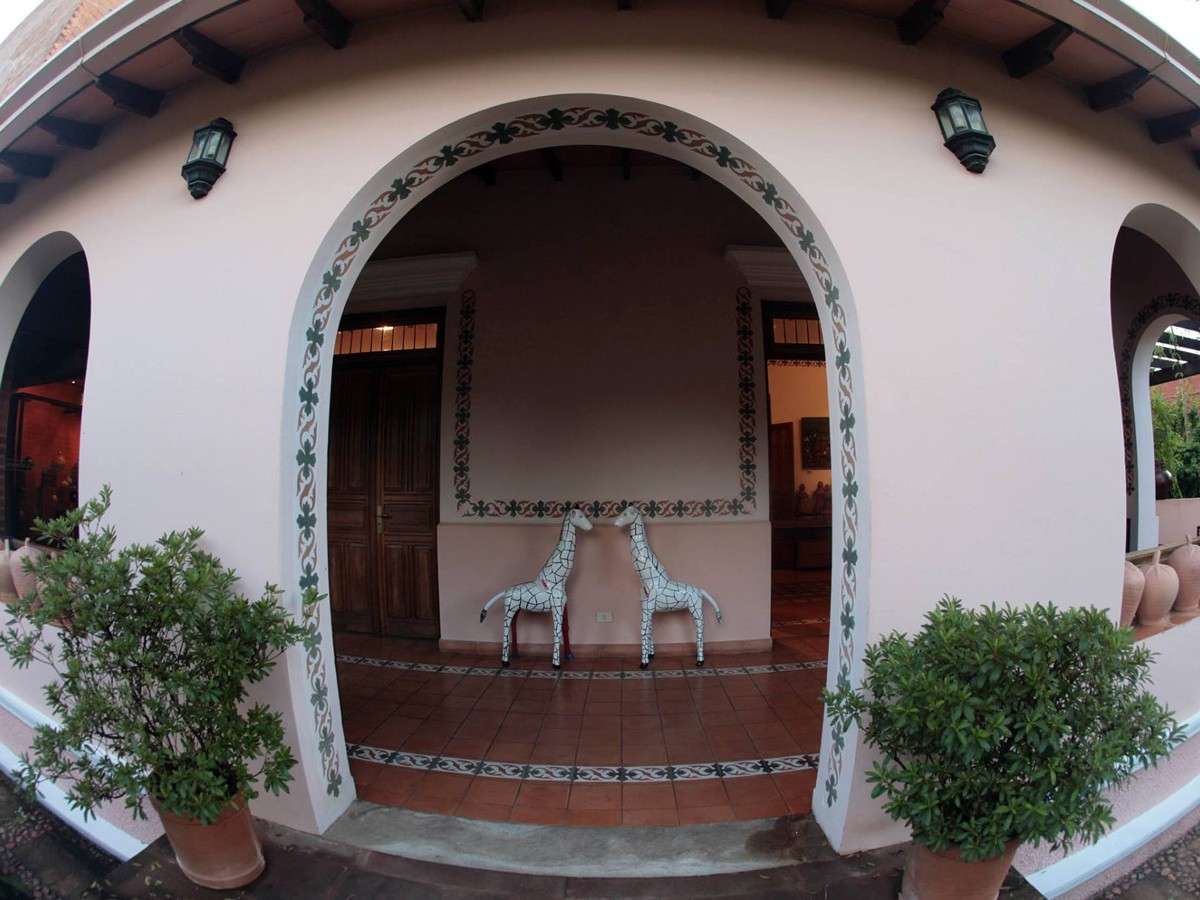
Museums of the Interior
Various museums have been established in the interior of the country. These galleries show the history of Paraguay through their exhibitions, and they take us through time, back to the difficult moments the country endured during the wars.
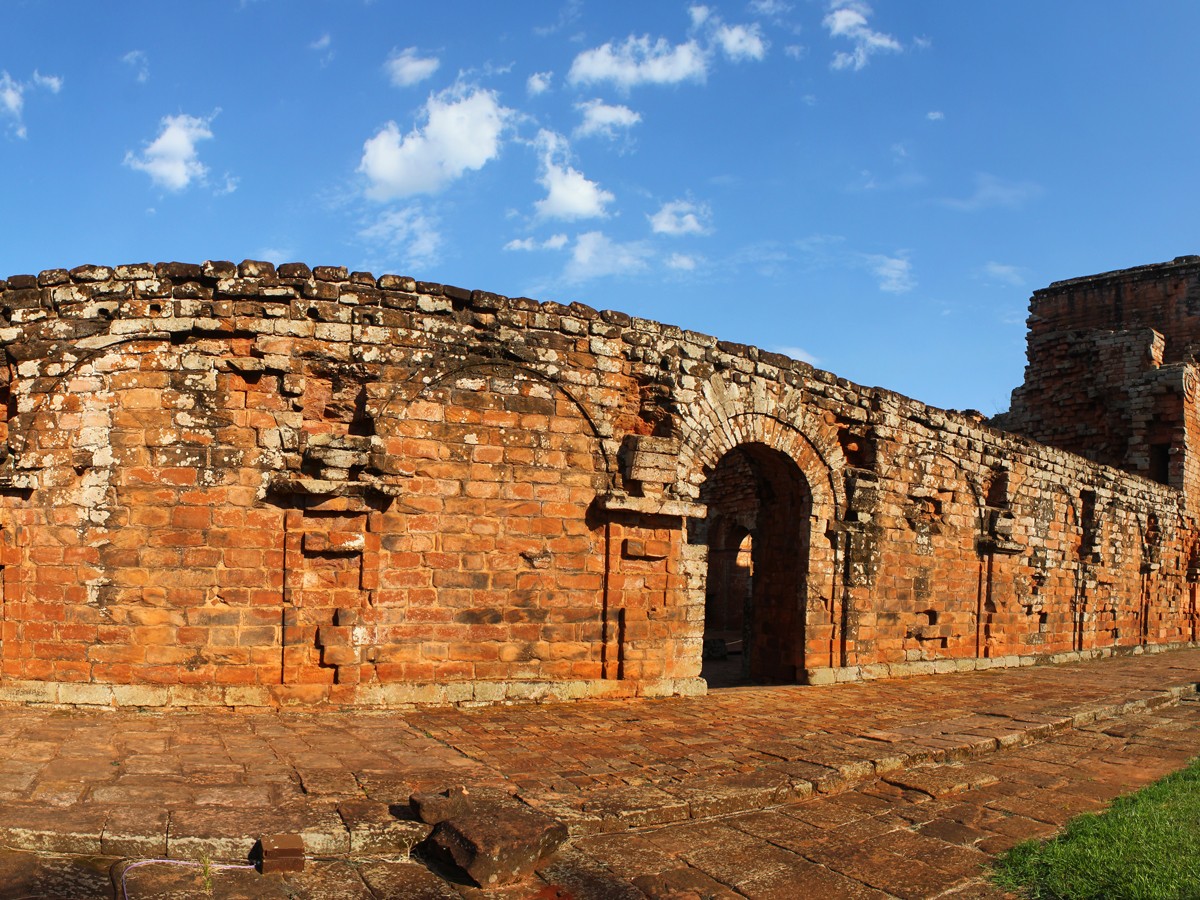
Jesuit Route
Paraguay has, established within its territory, one of the most important Jesuit legacies in the world: a unique cultural testimony, inherited from the Society of Jesus at the end of their evangelizing stage with the indigenous people of the South American lands.
The Guaraní Jesuit Missions, dating from the seventeenth century, have captured the world’s attention with their imposing buildings and museums that house extraordinary works of art. All this has been brought together in the Jesuit Route, which has been specially designed so visitors may live an experience that will take them through time, one that will offer them the best of an era that lives on through the legacy of our ancestors.
The Paraguayan Jesuit Route includes eight Missions situated in the departments of Misiones and Itapúa, two of them, the one in Santísima Trinidad (Route 6, Km 31) and the other in Jesús de Tavarangué (Route 6 up until Trinidad Km 31, then a detour of 11,6 km) were declared World Heritage in 1993. The other towns which are also included in the Route for still preserving part of the Jesuit legacy are: San Ignacio Guazú (Route 1 Km 226), Santa María de Fe (Route 1 up until the Km 230, and then a tarmac detour of 11 km), Santa Rosa de Lima (Route 1 up until Km 246, and then a tarmac detour of 2 km) Santiago (Route 1 up until Km 261, then 18 km on the road to Ayolas), San Cosme y San Damián (Route 1 up until Km 308, then a detour of 27 Km) and last, but not least, the one in Itapúa (in the city of Encarnación).



